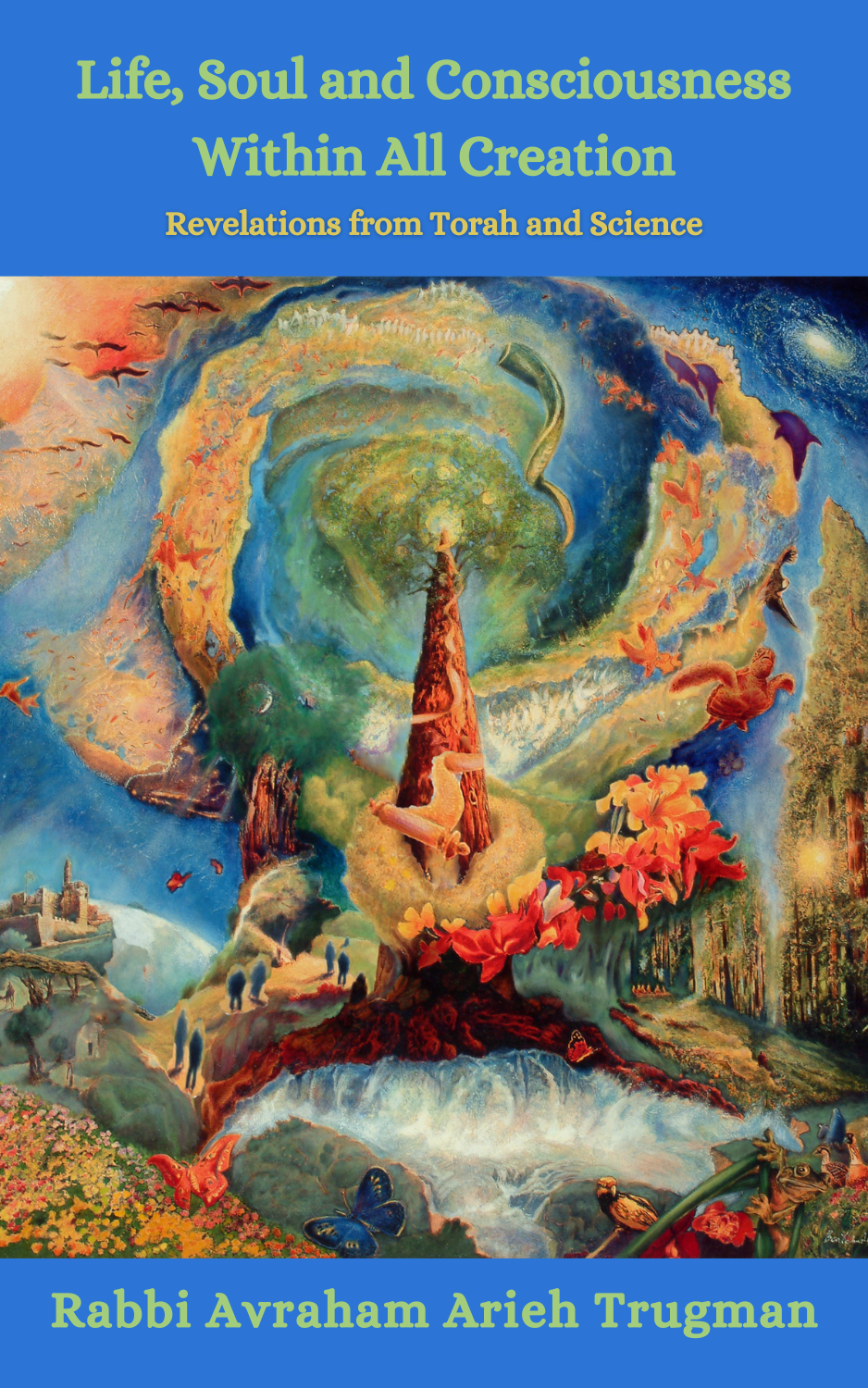A theme repeated often in the Arizal’s mystical teachings and magnified even more by the Ba’al Shem Tov is the notion that humanity is charged with the mission of elevating the sparks of holiness that fell in the cataclysmic breaking of the vessels. This primordial event manifests itself on many different levels of reality, as well as within human consciousness. The first issue addressed in Ki Teitzei illustrating this mission is that of the captive woman:
When you will go forth in war against your enemy and God, your God, delivers them into your hand, and you take a captive. And you will see among the captives a very beautiful woman, and you desire her; you may take her to yourself for a wife. You shall bring her to the midst of your house; she shall shave her head and let her nails grow. She shall remove the garment of her captivity from upon herself and sit in your house, and she shall weep for her father and her mother for a full month; thereafter, you may come to her and live with her, and she shall be a wife to you. But it shall be that if you do not desire her, then you shall send her on her own, but you may not sell her for money; you shall not enslave her, because you have afflicted her. (Deuteronomy 21:10-14)
Chassidut understands this episode to be a deep parable (a mashal) functioning on two primary levels: the battle men fight with their own evil inclinations and the battle all of humanity fights against the allure of the material world. These teachings have particular resonance in contemporary society as the influence of popular culture fueled by the media’s far-reaching tentacles is felt nearly everywhere.
From a sod perspective, the beautiful female captive represents the fallen sparks of holiness hidden within the superficial allure of physical beauty. Our attraction to this beauty is fueled by our own baser desires, which we must defeat. In the course of defeating the enemy, in this case our own base inclinations, we envision new possibilities and come into contact with sparks of holiness that can, under the appropriate circumstances, be redeemed. The Torah warns us though that redeeming sparks of holiness is a serious business which can only be achieved through a process of clarification and purification. The Slonimer Rebbe further explains that as soon as we pass the test of conquering our evil inclinations, we are immediately confronted with new tests, in this case, the test of the beautiful captive. On a metaphorical level, the captive woman must shave her head, let her nails grow long, and take off her garments of captivity to symbolize the process whereby her alluring external form is removed to determine if there really is a holy spark worthy of redemption underneath.
After the woman undergoes a month of mourning (during which her external beauty is significantly diminished), if the man is still attracted to her then the Torah assumes that his attraction to her was not merely a function of the heat of battle but a function of the spark of holiness in her that has now been redeemed. Having ascended to a new level of consciousness over the course of the last month, the captive woman is now ready to begin a new life, so she may marry him. Despite the Torah’s permitting the marriage, the Sages warn that such a marriage is fraught with difficulties. The Sages, always open to coded meanings in the text, understood the juxtaposition of the next two topics in the Torah portion as a warning against the risks involved in making such a marriage. They suggested that such a marriage – as these two topics indicate – can only lead to the cases of a man who has two wives, a beloved one and a despised one, and a couple who has a rebellious son.
Rabbi Ari Kahn, in his book Explorations, goes to great lengths to establish that the true facts of the case are quite different from what our initial superficial reading of the text leads us to believe. First, using rabbinic sources, he establishes that in those days only the most righteous of individuals were chosen to fight the Jewish people’s wars. Secondly, he cites the Zohar’s comment that this captured woman was no ordinary woman; rather, she was a “beautiful soul,” a spark of holiness trapped in a pagan culture. Thus, he concludes that the righteous soldier, who is attracted to her, is indeed drawn to this spark of holiness and not just motivated by raw desire. This notwithstanding, the Torah’s concern warns us that the process of redeeming sparks of holiness trapped in impure places must be approached with great care.
Rashi, citing classical sources, seems to explain that the Torah only granted the soldier permission to take such a woman in this way as a concession to the evil inclination, fearful that the soldier would take her in a forbidden way, if he had no sanctioned option. Indeed, reflecting the Torah’s feeling that this is not the best way to proceed, the long and cumbersome procedure makes sound psychological sense as it tends to discourage anyone from adopting it in the first place. On an even deeper level, Rabbi Kahn explains that since the forces of evil in the world want nothing better than to keep all the sparks of holiness hidden and under their control, the attempt to redeem this holy spark is not a concession to evil, but in fact a direct challenge to its power and schemes!
Taking this one step further, we must realize that not only is there an inner voice pushing us towards fulfilling our base desires, there is also an inner voice urging us to shun idealism, to reject the search for ways to rectify the world. This latter voice advises us to play it safe, to focus on advancing our own private interests and ego-driven realities. By rejecting both these voices and consciously attempting to engage the world and elevate it, we are courageously declaring war on the very essence of evil.
Translating this insight into our own contemporary reality, we should realize that Kabbalah and Chassidut alert us to both the implicit danger and amazing opportunity inherent in redeeming sparks of holiness. For Torah-observant Jews living and working in the modern world, this is no small test. It takes a high level of discernment, commitment to principles, and self-control to follow this higher calling. The Arizal and the Ba’al Shem Tov went even further in stating that redeeming the fallen sparks of reality is not only the responsibility of the individual but also the Jewish people’s fundamental purpose. Indeed, they even explain that the long and bitter exile needs to be understood in this context as, among other things, an opportunity to gather the sparks scattered throughout the world.
Rabbi Abraham Isaac Kook, first chief rabbi of Palestine in the years leading up to the creation of the State of Israel, waxed poetic and mystical in describing the ingathering of the exiles. He taught that when the Jews returned from the four corners of the earth they would bring with them sparks of holiness from their host countries. In the Land of Israel, these sparks would be elevated to their source, as ultimately all wisdom and knowledge has its source in the Torah. He envisioned this happening in the arts and sciences, and, in fact, in all the secular disciplines. In our generation, Rabbi Yitzchak Ginsburgh has dedicated most of his teachings and his nearly ninety books (at last count) to reveal not only the compatibility of secular knowledge and Torah wisdom, in general, but the Torah source of seminal ideas in the arts and sciences, in particular.
On a more personal level, each person must face the challenge of deciding what in the modern world to accept or reject, extract or winnow. Certain components can be elevated and redeemed and others need to be kept at a healthy distance. When it comes to raising children, the choices that must be made become even more challenging and at times quite confusing. Yet this is perhaps the most important spiritual work that both individuals and the collective nation of Israel can do. According to many, the very coming of Mashiach is contingent on gathering, redeeming, and elevating all the sparks of holiness scattered throughout the world. May this occur speedily and in our days!







